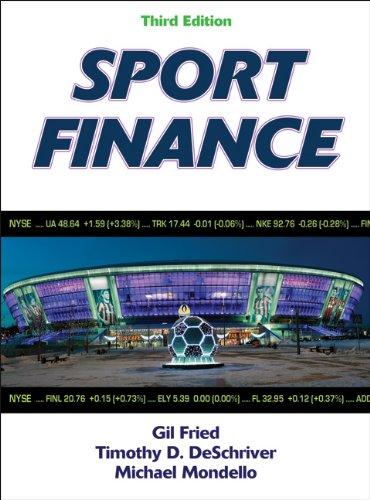

1) Recall that in a previous HW we showed that if the yield curve is restricted to move only in "parallel shifts", then arbitrage opportunities would be available. The purpose of this problem is to demonstrate that arbitrage-free models such as the Vasicek model eliminate these problems. Assume bonds are priced according to the Vasicek model. Hence, assume that if today is date- 0 and the current overnight 'spot rate' is r, then the price P(r,T) of a zero coupon bond with face value $T1 that matures at date- T is: P(r,T)=eA(T)rB(T), where the coefficients A(T) and B(T), which are functions only of time to maturity (T), are defined as: B(T)=(1eST)/SA(T)=(B(T)T)Y2B2(T)/4SY=L+(/S)(2/2S2) It is convenient to introduce the continuously-compounded yield to maturity y(r,T) via P(r,T)=ey(r,T)T. As such, we can write y(r,T)=(B(T)/T)r(A(T)/T) Note how this continuously compounded yield differs from what we usually use, where future values are discounted by: PV(0)=FV(T)/[1+y(T)]T. In contrast, here they are discounted by PV(0)=FV(T)ey(T)T. Related, note that an investment of $0 1 into a zero coupon bond with maturity-T buys a security with face value $T(1/P(r,T))=$T(ey(r,T)T). Below, assume that the parameters of the model are r=0.05,L=0.06,S=0.1,=0.1,=0.015 1C) Determine the modified duration of this portfolio using the formula D=(1/V)(dV/dr) Where V=[P(T=1)+P(T=19)]=$100 Hence, dV/dr=dP(T=1)/dr+dP(T=19)/dr =B(T=1)P(T=1)B(T=19)P(T=19) and thus D=(0.5)B(T=1)+0.5B(T=19) Note: because of the assumed mean-reversion, you will find this estimate of duration to be significantly less than the value of 10 that 'parallel shift' models assume 1D) Determine the 'convexity' of this portfolio using the formula: Convexity =(1/V)(d2V/dr2) Where V=P(T=1)+P(T=19)=$100 Hence, d2V/dr2=d2P(T=1)/dr2+d2P(T=19)/dr2 =B2(T=1)P(T=1)+B2(T=19)P(19). Therefore convexity =[0.5B2(T=1)+0.5B2(T=19)] The second portfolio is also currently worth $100, and has all of its value invested in a zero-coupon bond that has the same duration as the portfolio above. Note that for a portfolio composed of a single bond with maturity =T, its duration equals Duration=(1/P)(dP/dr)=B(T), which is significantly less than T for most maturities. 1E) Determine the maturity of this bond. That is, in this problem you need to search (by trial and error or by 'goal seek') for the maturity T whose B(T)=(1eST)/S happens to equal the duration of the portfolio determined in part 1C). (Hint: I found the maturity to be between 6 and 6.5 years.) Try to find the maturity to an accuracy of 4 digits. 1F) Determine the Maturity value = Face Value of this bond. 1) Recall that in a previous HW we showed that if the yield curve is restricted to move only in "parallel shifts", then arbitrage opportunities would be available. The purpose of this problem is to demonstrate that arbitrage-free models such as the Vasicek model eliminate these problems. Assume bonds are priced according to the Vasicek model. Hence, assume that if today is date- 0 and the current overnight 'spot rate' is r, then the price P(r,T) of a zero coupon bond with face value $T1 that matures at date- T is: P(r,T)=eA(T)rB(T), where the coefficients A(T) and B(T), which are functions only of time to maturity (T), are defined as: B(T)=(1eST)/SA(T)=(B(T)T)Y2B2(T)/4SY=L+(/S)(2/2S2) It is convenient to introduce the continuously-compounded yield to maturity y(r,T) via P(r,T)=ey(r,T)T. As such, we can write y(r,T)=(B(T)/T)r(A(T)/T) Note how this continuously compounded yield differs from what we usually use, where future values are discounted by: PV(0)=FV(T)/[1+y(T)]T. In contrast, here they are discounted by PV(0)=FV(T)ey(T)T. Related, note that an investment of $0 1 into a zero coupon bond with maturity-T buys a security with face value $T(1/P(r,T))=$T(ey(r,T)T). Below, assume that the parameters of the model are r=0.05,L=0.06,S=0.1,=0.1,=0.015 1C) Determine the modified duration of this portfolio using the formula D=(1/V)(dV/dr) Where V=[P(T=1)+P(T=19)]=$100 Hence, dV/dr=dP(T=1)/dr+dP(T=19)/dr =B(T=1)P(T=1)B(T=19)P(T=19) and thus D=(0.5)B(T=1)+0.5B(T=19) Note: because of the assumed mean-reversion, you will find this estimate of duration to be significantly less than the value of 10 that 'parallel shift' models assume 1D) Determine the 'convexity' of this portfolio using the formula: Convexity =(1/V)(d2V/dr2) Where V=P(T=1)+P(T=19)=$100 Hence, d2V/dr2=d2P(T=1)/dr2+d2P(T=19)/dr2 =B2(T=1)P(T=1)+B2(T=19)P(19). Therefore convexity =[0.5B2(T=1)+0.5B2(T=19)] The second portfolio is also currently worth $100, and has all of its value invested in a zero-coupon bond that has the same duration as the portfolio above. Note that for a portfolio composed of a single bond with maturity =T, its duration equals Duration=(1/P)(dP/dr)=B(T), which is significantly less than T for most maturities. 1E) Determine the maturity of this bond. That is, in this problem you need to search (by trial and error or by 'goal seek') for the maturity T whose B(T)=(1eST)/S happens to equal the duration of the portfolio determined in part 1C). (Hint: I found the maturity to be between 6 and 6.5 years.) Try to find the maturity to an accuracy of 4 digits. 1F) Determine the Maturity value = Face Value of this bond








